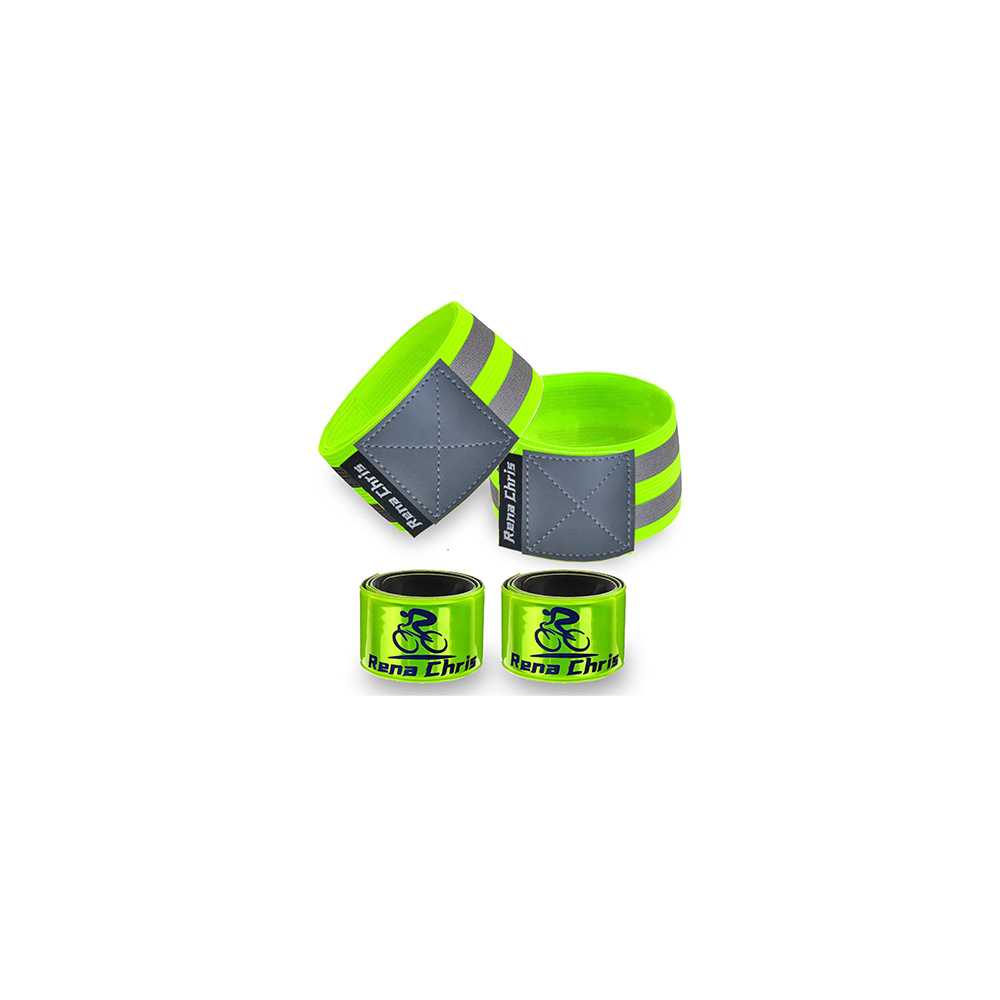
The guide gives step-by-step instructions. They tell you how to upgrade your running gear with reflective tech. This will make you more visible and safe during morning or evening runs.
Kofuzi Claus believes runners are overspending! Unnecessary gear to avoid
Assess Your Current Gear
Take stock of your current running gear. Find items that can use reflective technology. These include jackets, vests, shoes, and accessories. Start by laying out all your running gear in a well-lit area. Check for reflective elements on each item. Examine jackets, vests, and accessories for reflective strips or detailing elements. Examine your shoes to see if they have reflective accents or laces. Make a list of the gear that lacks reflective technology.
Choose the items from your list that you most need to upgrade with reflective elements. Research running gear brands that specialize in reflective technology. Look for jackets with 360-degree reflective panels or vests with high-visibility features. Check out shoe brands that offer models with reflective details or laces. Explore accessories like hats, armbands, or belts that incorporate reflective elements. Select the items that best suit your needs and budget. Make a plan to replace or upgrade your gear with new reflective technology.
Research Reflective Options
Research different types of reflective materials in the market. Find the best option for your gear. Compare reflective tapes, paints, and fabrics. Choose the most suitable one for your needs. Consider factors like durability, visibility, and ease of use. Do this for each type of material. Consider the location where you will use the gear and the amount of reflection needed. Test different materials. Test them under various lighting conditions. See how well they enhance visibility. Make an informed decision based on your findings. Use them to select the best reflective material for your gear.
Plan Your Upgrades
- Assess Your Gear: Start by evaluating your current gear. Figure out which pieces would benefit most from reflective upgrades. Consider items such as running shoes, jackets, and backpacks. You can also consider accessories like armbands or hats.
- Research Reflective Technology: Look into the different types of reflective technologies available in the market. Understand their visibility range, durability, and application methods to make an informed decision.
- Create an Upgrade List: Make a detailed list of the gear you want to upgrade with reflective technology. Note the specific items and their condition. Also, note the type of reflective enhancement you plan to add.
- Track Your Upgrades: Use the list to track the progress of each upgrade. Note the date of the upgrade. Note the type of reflective technology used and any other observations. This will help you stay organized and ensure you don’t miss any gear enhancements.
- Implement Upgrades: Once you have your list ready, start upgrading your gear one by one. Follow the instructions provided with the reflective technology. Take precise steps to achieve a flawless improvement. Remember to update your list as you complete each upgrade.
Purchase Reflective Materials
- Acquire the necessary reflective materials based on your planned upgrades. Make sure you have enough material to cover the desired areas on your running gear. For example:
- Plan to add reflective strips to the front and back of your running jacket. Calculate the length of the strips you need.
- If you want to be more visible when running, get reflective shoe decals or laces. Get them in the right size.
- Measure the areas where you intend to apply the reflective materials. Use a fabric measuring tape to ensure accuracy.
- Purchase reflective materials that are specifically designed for outdoor and sportswear. Look for materials that are durable and weather-resistant to withstand your running routines.
- Consider the types of reflective materials available. These include reflective tapes, iron-on patches, and fabric paint. Choose the type that best suits your customization needs.
Apply Reflective Technology
Follow the instructions that come with the reflective materials. Use them to apply the materials to your running gear. Start by gathering all the tools. You’ll need a clean cloth, rubbing alcohol, and a heat source, like a dryer or iron. Begin by cleaning the surface of your gear with rubbing alcohol to ensure good adhesion.
Next, put the reflective material where you want it on the gear. Make sure it’s centered and straight. Drape a cloth over the material and exert steady force across it. If using an iron, it must be on the right setting for the material. Apply steady pressure for the specified duration.
Lastly, let the adhesive cool completely before using or washing the gear. Take your time. It will result in a well-adhered, long-lasting reflective addition to your running gear. It will keep you visible and safe on your runs.
Test and Adjust
After adding reflective technology to your gear, test how visible it is in low light. Wear the gear and step into an area with poor lighting or during dusk to test its reflectiveness. See how visible you are. If any gear parts are dark, adjust them. Add more reflective materials. Or, move the ones you have to ensure greatest visibility and safety at night. Remember, the goal is to make yourself visible to others. This will keep you safer in low light.
Stay Safe, Upgrade Today!
Great job! Your conclusion summarizes the main point. It covers your blog post on upgrading running gear with reflective technology. It stresses the importance of staying safe and visible while running. This is especially true in low light. Keep up the good work in providing valuable information to your readers!
Essential Supplies
Enhance Visibility While Running
Choosing the Right Running Gear with Reflective Features
- Wear your running gear with reflective materials. Do this in low-light conditions. It’s going to increase safety and visibility.
- Choose running clothing with reflective elements. These can be strips, logos, or patterns. They increase your visibility to drivers and other pedestrians.
- Use accessories like reflective armbands, vests, or belts. Use them if your running gear lacks reflective features.
- Remember to wash your reflective running gear as the manufacturer instructs. This keeps it visible.
- Consider adding safety measures. For example, use a headlamp or carry a flashlight when running in dark areas.
Stay Safe and Visible with Reflective Running Gear
Reflective running gear helps enhance safety during evening runs. It makes you more visible to drivers and other walkers. The gear has reflective material. It reflects light. This makes you stand out in low-light conditions. This higher visibility reduces the risk of accidents. It lets others see you from a distance and react. Wearing reflective running gear boosts safety in low-light conditions.
Yes, some brands recommend their high-quality reflective running gear. They include Nike, Adidas, Brooks, and Under Armour. They’re known for making gear that is stylish and functional. It has high visibility to keep you safe during runs. This is especially important in low light. Look for products with reflective elements. These include logos, stripes, or piping. They ensure the greatest visibility.
I agree! Running gear items often have reflective elements. These items include shoes, jackets, vests, shorts, shirts, and hats. These reflective elements increase visibility in low light. They keep you safe while running outdoors.
Yes, there are standards and certifications. They ensure the quality of reflective running gear. One well-known standard is the ANSI/ISEA 107 standard. It specifies requirements for high-visibility safety apparel. These include reflectivity, color, and design. Another certification to look for is the EN 471 standard in Europe. These standards ensure that reflective running gear meets specific criteria. The criteria are for visibility and quality. They enhance your safety while running in low-light.
Yes, you can customize reflective gear. You can do this to meet your preferences. Some companies specialize in making custom reflective gear. This gear includes vests, jackets, and armbands. You can choose specific colors, add logos or text, and select the type of reflective material used. Customizing reflective gear can improve visibility. It also lets you show your style or brand. Keep in mind that options vary by maker or supplier. So, always ask about customization when seeking personalized reflective gear.
There are several types of reflective materials used in running gear to improve visibility and safety, including:
- Reflective tape: Reflective tape is made of polyester or PVC. It has glass bead or microprismatic technology. It is commonly found on running shoes, jackets, and accessories.
- Reflective fabric: Fabric woven with reflective yarns or coated with reflective substances to enhance visibility. It is often used in running vests, shorts, and hats.
- Reflective decals: They are thin stickers or decals. You can apply them to various parts of running gear. This gear includes clothing, shoes, and accessories.
- Reflective ink: The ink has reflective particles. It is screen-printed onto running apparel to make it visible in low light.
- Reflective piping: The gear has piping with reflective properties. It is sewn into seams or edges to outline shapes and increase visibility.
These reflective materials make runners more visible. They keep them safer when exercising in low light or dark conditions.
Several running gear items have reflective elements. They help keep you visible and safe while running in low-light conditions. Some common items include running shoes with reflective details. Also, reflective vests, jackets, shirts, shorts, pants, hats, and armbands. You can also find accessories like gloves and headbands with reflective elements. You can even find water bottles with them. These items are essential for staying safe. They also keep you visible during your early morning or evening runs.
Yes, the reflective quality of running gear can diminish over time with regular use. Sunlight, frequent washing, and wear and tear can fade or damage reflective materials. You must follow care instructions from the maker. This will keep your gear reflective for as long as possible.










 Home
Home  Blog
Blog
I decided to create a custom reflective design on my running gear instead of using pre-made options. I incorporated my initials using reflective iron-on letters. It added a personal touch to my upgrades!
That's a fantastic idea! Customizing your running gear with reflective iron-on letters is a great way to express your style while also enhancing safety. It's wonderful to hear how you personalized the upgrades to suit your preferences.
Could you suggest some advanced tips for applying reflective technology to running gear? I want to ensure a professional-looking finish.
Certainly! An advanced tip for applying reflective technology is to use a heat press machine for precise and long-lasting bonding. Make sure to follow the manufacturer's instructions carefully to achieve a professional finish.
I have experience using reflective materials for cycling gear. Would you say the process of upgrading running gear with reflective technology is similar? Any key differences to note?
While the principles of applying reflective technology may be similar between cycling and running gear, the key difference lies in the movement patterns and areas of visibility. Running gear may require more strategic placement of reflective materials to ensure optimal visibility during motion.
How do you recommend assessing the durability of current gear for reflective upgrades? Are there specific signs of wear and tear to look out for?
What are the best practices for testing the effectiveness of the reflective upgrades on running gear? I want to make sure I'm visible in low-light conditions.
I tried researching reflective options, but there are so many brands and types available. Do you have any specific recommendations for high visibility reflective tape for running gear?
Hello! For high visibility reflective tape, brands like 3M and Scotchlite are known for their quality and durability. Look for options that offer strong adhesive properties and are weather-resistant to ensure longevity.
Hi there! When assessing your current gear for reflective upgrades, check for any fading, fraying, or peeling of the fabric. These signs indicate that the reflective material may not adhere properly. It's also good to inspect any seams or stitching for potential weak points.